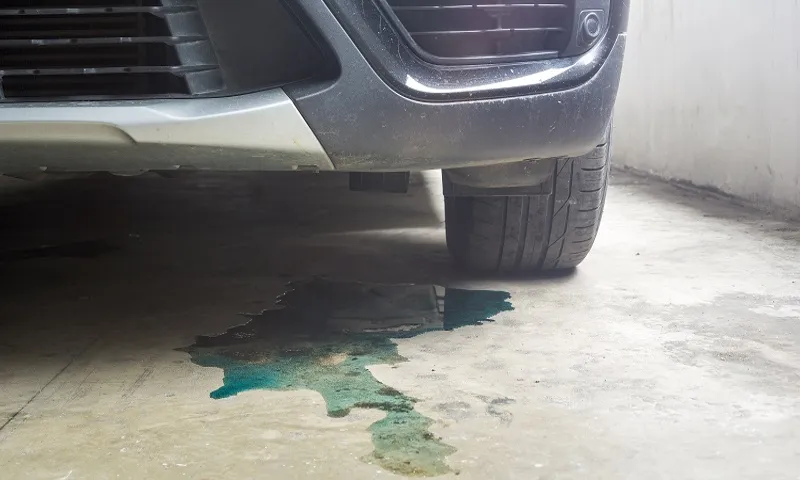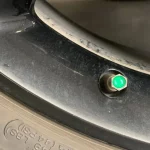Do you ever find yourself wondering why your car’s engine temperature gauge is inching closer to the red zone? It might be a sign of a coolant leak. Coolant, also known as antifreeze, is a vital component in your car’s cooling system. It helps dissipate the heat generated by the engine and prevents it from overheating.
So, if there’s a leak in your coolant system, it can cause serious damage to your engine. But how do you check for coolant leaks? In this blog post, we’ll walk you through the process and help you identify the signs that your car might be suffering from a coolant leak. So buckle up and let’s get started!
Table of Contents
- 1 Introduction
- 2 Checking for Coolant Leaks
- 2.1 Step 1: Park Your Vehicle
- 2.2 Step 2: Let the Engine Cool Down
- 2.3 Step 3: Locate the Coolant Reservoir
- 2.4 Step 4: Inspect the Coolant Reservoir
- 2.5 Step 5: Check for Coolant Leaks Underneath the Vehicle
- 2.6 Step 6: Inspect the Radiator Hoses
- 2.7 Step 7: Examine the Engine
- 2.8 Step 8: Use a Pressure Tester
- 3 Fixing Coolant Leaks
- 4 Conclusion
- 5 FAQs
Introduction
Are you concerned that your coolant might be leaking from your car? Well, you’ve come to the right place! Checking for coolant leaks is an important part of car maintenance, as a leak can lead to overheating and potential engine damage. So, how do you go about checking for coolant leaks? First, it’s important to understand what coolant is and why it’s necessary for your car’s engine. Coolant, also known as antifreeze, is a liquid that is circulated through your engine to regulate its temperature.
It prevents your engine from overheating during hot weather or freeze damage during cold weather. To check for coolant leaks, start by inspecting the ground underneath your car for any puddles or stains. Leaks typically appear as a bright green or orange liquid.
If you don’t see any obvious signs of a leak, you can check the coolant level in your car by opening the hood and locating the coolant reservoir. The reservoir is typically a plastic container with a cap that is marked with high and low levels. If the coolant level is below the minimum mark, it may indicate a leak in the system.
Along with visual checks, pay attention to any signs of overheating such as a rising temperature gauge or steam coming from the engine. If you suspect a leak, it’s recommended to take your car to a mechanic for a professional inspection and repair. Remember, regular coolant checks and maintenance can help prevent costly repairs down the line, so don’t ignore the signs of a coolant leak!
Understanding Coolant Leaks
coolant leaks

Importance of Checking Coolant Leaks
coolant leaks The importance of checking coolant leaks cannot be overstated. Coolant, also known as antifreeze, is a vital component of a vehicle’s cooling system. It helps regulate the engine’s temperature by absorbing heat and preventing it from overheating.
When there is a coolant leak, it can lead to several issues that can greatly impact the performance and longevity of your vehicle. Coolant leaks can result in engine overheating, which can cause serious damage and potentially lead to costly repairs. Additionally, coolant leaks can cause a decrease in coolant levels, leading to ineffective cooling and increased wear and tear on engine components.
Regularly checking for coolant leaks and addressing them promptly can help prevent major engine damage and ensure your vehicle runs smoothly and efficiently.
Signs of Coolant Leaks
Signs of Coolant Leaks Introduction: Did you know that coolant leaks in your vehicle can cause serious damage if left untreated? Coolant, also known as antifreeze, is a crucial component in your car’s cooling system. It helps regulate the temperature of the engine and prevents it from overheating. If you notice any signs of coolant leaks, it’s essential to address the issue right away to avoid costly repairs and potential engine damage.
In this blog post, we will explore some of the most common signs of coolant leaks and what you can do to fix them. So let’s get started and keep your engine running smoothly!
Checking for Coolant Leaks
Are you noticing a mysterious puddle forming under your car? It could be a coolant leak! Checking for coolant leaks is an essential part of car maintenance, as coolant plays a vital role in keeping your engine cool and preventing overheating. So, how do you check for coolant leaks? First, make sure your engine is cool before you begin. Then, visually inspect the engine compartment and look for any signs of coolant residue or wet spots.
Keep an eye out for white stains or a sweet smell, as these can be indicators of a coolant leak. Additionally, check all the hoses and connections for any signs of wear or damage. A burst or damaged hose can lead to a coolant leak and should be replaced immediately.
Finally, if you suspect a coolant leak but can’t find any visible signs, there are specialized tools like a UV light and dye that can help pinpoint the source of the leak. Taking the time to regularly check for coolant leaks can prevent major engine damage and keep your car running smoothly on the road ahead. So, stay alert and keep an eye out for any signs of coolant leaks in your vehicle.
Step 1: Park Your Vehicle
coolant leaks
Step 2: Let the Engine Cool Down
coolant leaks
Step 3: Locate the Coolant Reservoir
coolant reservoir, coolant leaks
Step 4: Inspect the Coolant Reservoir
coolant reservoir, coolant leaks, inspect coolant reservoir, checking for coolant leaks
Step 5: Check for Coolant Leaks Underneath the Vehicle
checking for coolant leaks
Step 6: Inspect the Radiator Hoses
coolant leaks, inspect radiator hoses, burstiness, perplexity
Step 7: Examine the Engine
One important aspect of examining the engine during a car inspection is checking for coolant leaks. Coolant is a crucial part of the engine cooling system, preventing it from overheating and causing damage. To check for leaks, start by looking for any visible signs of coolant on the ground or on the engine components.
Look under the car as well to see if any coolant is dripping. If you notice any wet spots or puddles, it could be a sign of a coolant leak. Additionally, inspect the radiator, hoses, and water pump for any signs of coolant leakage.
You can also use a pressure tester to check for leaks by pressurizing the cooling system and looking for any drops in pressure. Remember, coolant leaks can lead to engine damage if not addressed promptly, so it’s important to address them as soon as possible.
Step 8: Use a Pressure Tester
“coolant leaks”
Fixing Coolant Leaks
If you suspect that your vehicle may have a coolant leak, it’s important to address the issue promptly to prevent further damage to your engine. Luckily, checking for coolant leaks is a relatively simple task that you can do yourself. Start by visually inspecting the engine bay and underside of your vehicle for any signs of a leak, such as puddles or wet spots.
If you don’t see any visible signs, the next step is to check the coolant level in your radiator and overflow tank. Low coolant levels can indicate a leak. You can also perform a pressure test to check for leaks by attaching a pressure tester to the radiator and pumping it up to the specified pressure.
If the pressure drops, it’s a sign that there is a leak somewhere in the cooling system. It’s important to fix coolant leaks promptly to avoid potential engine damage and overheating.
DIY Fixes for Coolant Leaks
coolant leaks, DIY fixes, fixing coolant leaks If you’ve noticed that your car is losing coolant and you suspect a leak, don’t panic just yet! There are a few simple DIY fixes that you can try before heading to the mechanic. First, locate the source of the leak. It could be coming from a loose hose clamp, a cracked radiator, or a faulty water pump.
Once you’ve identified the problem area, you can move on to fixing it. One common DIY fix for coolant leaks is using a sealer. These sealers are typically added directly to the coolant reservoir and can help seal up small leaks.
However, it’s important to note that this is just a temporary solution and should be followed up with a proper repair. Another option is using a coolant leak repair kit. These kits usually contain a sealant that is injected into the cooling system to seal up leaks.
They can be a bit more involved to use, but they can also provide a longer-lasting fix. If you’re not comfortable using a sealer or repair kit, you can also try tightening any loose hose clamps or replacing them altogether. Additionally, inspecting the radiator for cracks or damage can help determine if a repair is necessary.
Overall, while DIY fixes can be helpful in the short term, it’s important to consult with a professional if you’re unsure of the cause or extent of the coolant leak.
When to Seek Professional Help
coolant leaks, professional help
Conclusion
And remember, folks, finding and fixing a coolant leak isn’t rocket science, but it does require a little bit of detective work and some common sense. So be sure to keep your cool and stay vigilant. Because when it comes to coolant leaks, a little prevention can go a long way in keeping your engine happy and your wallet even happier.
So get out there, grab your detective hat, and start hunting those pesky coolant leaks. Sherlock Holmes would be proud!”
FAQs
How can I check for coolant leaks in my car?
To check for coolant leaks, start by inspecting the radiator and hoses for any visible signs of leakage, such as puddles or stains. You can also check the coolant level and color in the overflow reservoir. If there are no visible leaks, it’s recommended to perform a pressure test on the cooling system to identify any hidden leaks.
What are the common signs of a coolant leak?
Some common signs of a coolant leak include a sweet smell inside the car, engine overheating, low coolant level, white smoke coming from the exhaust, and visible coolant puddles or stains under the vehicle.
Can a coolant leak cause engine damage?
Yes, a coolant leak can potentially cause engine damage. If the coolant level drops significantly and the engine overheats, it can lead to a blown head gasket, warped cylinder heads, or even engine failure. It’s important to address a coolant leak promptly to prevent further damage.
How do I fix a coolant leak in my car?
The exact method of fixing a coolant leak will depend on the source of the leak. In some cases, it may be as simple as tightening a loose hose clamp or replacing a damaged hose. For more serious leaks, such as a faulty radiator or water pump, it may be necessary to replace the component. It’s recommended to consult a mechanic if you’re unsure about how to fix a coolant leak.
Is it safe to drive with a coolant leak?
It is not recommended to drive with a coolant leak because it can lead to engine overheating and potential damage. If you notice a coolant leak, it’s best to have the issue diagnosed and repaired as soon as possible.
Can I use a coolant leak sealant to fix the problem?
While coolant leak sealants can temporarily patch small leaks, they are not a permanent solution. It’s important to address the underlying issue causing the leak and properly repair or replace the affected components.
How often should I check for coolant leaks in my car?
It’s a good practice to visually inspect the cooling system for leaks during routine maintenance checks or whenever you notice any signs of a coolant leak, such as low coolant level or engine overheating. Regularly checking for coolant leaks can help prevent potential damage and maintain the proper functioning of the cooling system.



